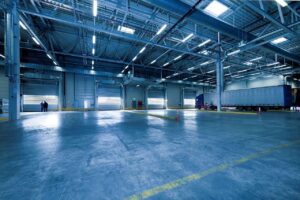LED lighting wasn’t always the obvious choice for all your lighting needs. However, improvements over the past few years have changed that. To reiterate some points from the Retrofit section of our website, LEDs reduce your lighting and energy costs, have reduced environmental impact and positively influence mood and attentiveness. But many people still cringe when they hear about LEDs. Why is that?
Below is a summary of the major criticisms of LED from “Then” (when LEDs first started coming onto the market), and what LEDs really are like “Now” in the current market, with up to date and correct information.
[/fusion_text][fusion_table]
Then |
Now |
|---|---|
| Toxic: LEDs contain no mercury, but they contain other toxic and harmful substances such as arsenic, lead, nickel and copper which can harm the environment. This means they are no better than CFLs! (6) | Safe: LEDs are environmentally friendly during their lifespan (reducing energy consumption and carbon emissions) and are up to 100% recyclable at the proper facilities.Additionally, LEDs do not contain significant amounts of any harmful components. They are classed as RoHS compliant. RoHS stands for the Restriction of the Use of Certain Hazardous Substances in Electrical and Electronic Equipment. These restrictions prevent the sale of equipment containing harmful levels of any potentially harmful substance. (1) |
| Harsh: They produce an extremely harsh white/blue light which can cause illuminated objects to look unnatural in colour, causing discomfort to the human eye. This is due to using blue LEDs with a coating that leaves out part of the colour spectrum, causing the harsh effect. (2) | Friendly: LEDs come in a variety of colour temperatures (thanks to advancements in LED type combinations and new phosphor coating) to suit whatever space and purpose. You can have anything from the warm whites that incandescents offered, to cool white for spaces where you need intense focus. (3) |
| Kills Retinal Cells: A study in the journal of Photochemistry and Photobiology found that LED radiation caused significant damage to human retinal pigment epithelial cells in vitro. (5) | Non-harmful: LEDs that emit white light do not contain significantly more blue (the colour accused of causing damage) than any other source at the same colour temperature.No light source that emits white light and is used in general lighting applications is considered hazardous to the retina for healthy adults. (8) |
| Heat Problems: LEDs do not radiate heat away like incandescents and CFLs, so they need large, bulky heat-sinks to cool the bulbs. (2) | Heat-controlled: LED bulbs or fixtures have built-in heat sinks to help pull heat away from the bulb, helping it to have a long life. Because they are built in, they are not bulky. (3)Some bulbs are not designed to be enclosed due to heat, however, so be careful to identify what type of bulb you need and purchase the correct ones. |
| Expensive: In 2012, one bulb could run you as high as $50. Even with their energy-saving promises, it would take years to have a return on investment. (7) | Affordable: Thanks to Haitz’s law (the LED equivalent to Moore’s Law for computers), we now understand that every decade the cost of producing useful light will fall by a factor of 10, whilst the amount of light generated increase by a factor of 20. (2)Since 2008, the cost of LED lights has fallen more than 85%! (4)
With that price point, and the promise of cutting energy use and lasting significantly longer, LEDs are well worth every penny. |
| Inefficient: LEDs are no more energy efficient than incandescents. (4) | Super-efficient: Today’s LEDs are six to seven times more energy efficient than the conventional incandescent light! (4) |
| Shorter than expected lifespan: Some LEDs during testing don’t make it to the 6000 hour (9) | Long Life: LEDs have lumen lifespans of 10 times longer than traditional lighting, or 50K hours minimum when under the correct conditions for the bulb/fixture. (10) |
As you can see, the major criticisms from “Then” have been improved upon, and largely solved in the “Now”. Next time you hear someone say LEDs aren’t all they’re cracked up to be, or have a client resistant to make the switch, show them the facts. LEDs have made leaps and bounds from their humble beginnings to now, and are constantly being further developed and improved upon to give you exactly what you want and need for your lighting.
References
- Recycling of LED Lights
- LED Bulbs: the end of the light bulb
- Five things to consider before buying LED bulbs
- The History of the Light Bulb
- Photochemistry and Photobiology (2013)
- The Dark Side of LED Lightbulbs
- Flicker Off, Flicker On
- US Department of Energy: “Optical Safety of LEDs”
- Daily Mail Online
- Commercial LED Lighting Retrofit



































